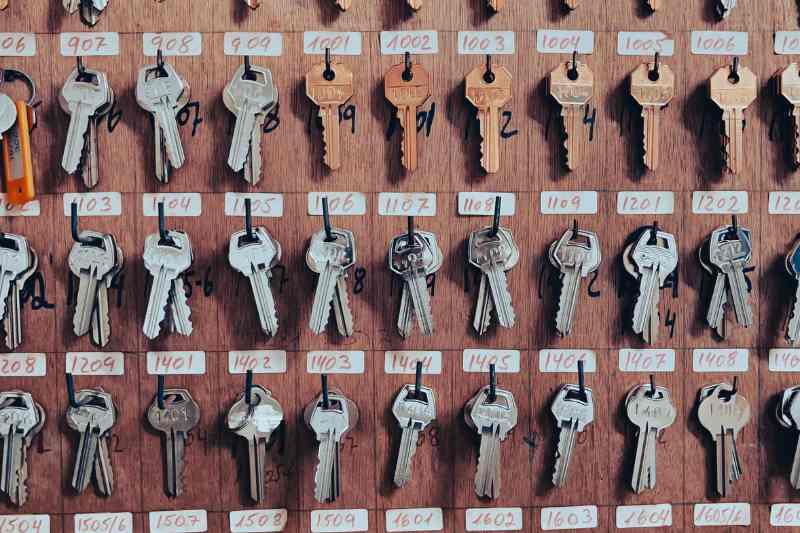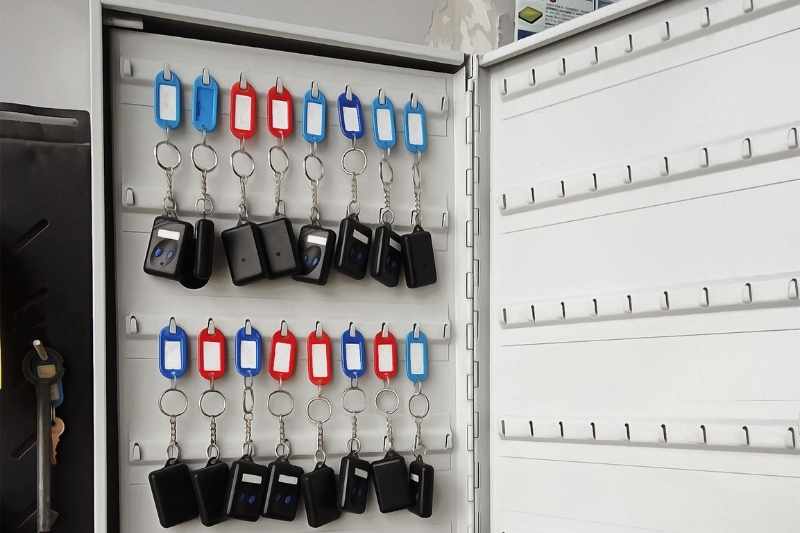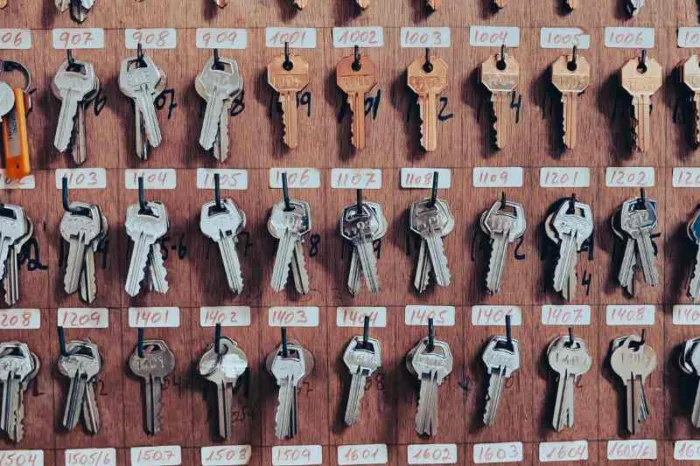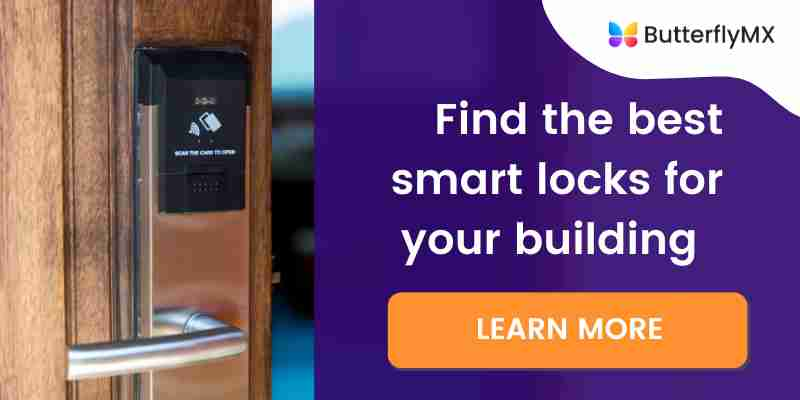
Depending on the size of your multifamily or commercial building, you might be in charge of hundreds of keys. As a property manager, it’s your job to ensure that key storage is seamless — something that may be helped with the use of an electronic key cabinet.
To help you decide on the right key management system for you, we’ve put together this guide to electronic key cabinets. Keep reading to learn more about electronic key cabinets, how they differ from key boxes, and the best way to manage keys at your property.
In this post, you’ll discover:
What is an electronic key cabinet?
An electronic key cabinet is an electronically powered key management system that requires credentials — such as a PIN, fob, or key card — to open the cabinet and access the keys inside. They come in many different sizes and storage capacities, depending on your needs.
While most electronic key cabinets are accessible via combinations and passcodes, some also have biometric readers and QR code scanners.
Electronic key cabinets help organize the various keys needed to run a property, including unit keys, amenity keys, and storage keys. They’re perfect for safeguarding important keys and maintaining organization, as well as allowing simplified access to them.
The best places to put your key cabinet include:
- Inside the office
- Near the lobby entrance
- Close to the front desk
- Next to amenity doors
Watch to see how ButterflyMX enables self-guided tours at apartments:
Electronic key cabinet uses
When buying the best key storage system, you first need to know the reasons why someone would use an electronic key cabinet.
Here’s when to use electronic key cabinets:
- Key storage: Imagine the number of keys you control daily, and then imagine you have no centralized storage system for them. A key cabinet could help you manage the sheer number of keys you’re in charge of.
- Organization: It’s not enough to merely store your keys — organization is important when dealing with so many different keys or fobs. An electronic key cabinet will help you easily organize them so that you don’t lose or mislabel them.
- Protected access: When you have keys that will open any door in your building, it’s critical to protect them. With an electronic key cabinet, you can decrease the risk of stolen keys while increasing the ease of key access for you and your staff.

Electronic key cabinet alternatives
While electronic key cabinets and key lock boxes are useful, they’re not the only key management system from which to choose. Depending on your needs, you should also consider three alternatives — a key safe, a key lock box, and a key locker.
Key cabinet alternatives:
1. Key locker
A key locker is a locker that uses a keypad or other access control device to streamline access to stored keys. Not only does it allow for individual access to over a dozen keys at once, but it also allows property staff to easily manage visitor access.
When it comes to self-guided tours, a key locker is the best alternative to an electric key cabinet. This is because a key locker allows property managers to send temporary digital access codes to visitors so they can find the correct key and conduct their tour without help.
2. Key safe
A key safe is a key storage solution that requires combinations or PINs to access. In most cases, key safes are best used to store important keys away from uncredentialed individuals. But in some cases, key safes can also provide keys for self-guided tours, maintenance, and extra key storage.
3. Key lock box
A key lock box is a device that allows you to store keys in an accessible location. But how do key lock boxes work? Most will require a combination or key to access unless it’s a smart key lock box — then you only need your smartphone!
Electronic key cabinet vs. key lock box
- Credential requirements: Many key lock boxes require you to carry a key to unlock the box. In this way, electronic key cabinets and key lock boxes are similar. However, key lock boxes are better for self-guided tours, whereas key cabinets are better for key management.
- Storage space: Electronic key cabinets have more storage space in them, making it easier to organize multiple keys in your system. However, key cabinets make it difficult to separate keys for tours, service appointments, amenity spaces, and other uses.
- Cost: Like most things, the cost will be a big factor in which system you choose. Most electronic key cabinets will run anywhere between $200 and $1,800 depending on all the bells and whistles. A key lock box will be much cheaper, usually costing anywhere from $20 to $100, unless you opt for the smart versions, which usually cost $100 or more.
Takeaways
- An electric key cabinet is an electrically powered key storage system that requires credentials such as combinations, PINs, and passcodes to access.
- Electric key cabinets are often used to store several keys in one place where staff, tenants, and visitors can access and retrieve keys.
- Three alternatives to electric key cabinets are key lockers, key safes, and key lock boxes.






